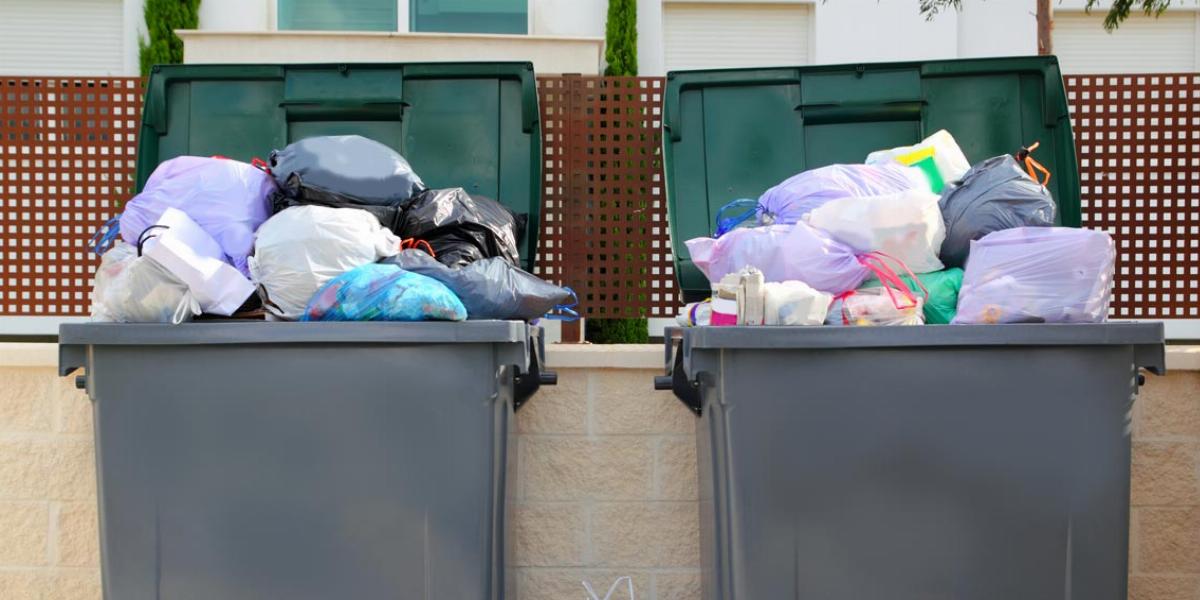
Taking out the trash isn’t just a chore. It could be costing your business money—not to mention your customers’ loyalty. Today’s consumers want to support businesses with eco-friendly practices. And the more you throw out, the more you’re spending on trash collection and replacement materials.
Before you can reduce waste at your organization, you need data to create the smartest plan of attack. If you don’t have the information on-hand, it’s time to do a waste audit. We turned advice from sustainability consultants Great Forest and Badger Balm, a personal care company that conducts quarterly audits, into a simple checklist to help your business get started.
A waste audit is a method for analyzing an organization’s waste stream. The goal is to discover what types and quantities of waste (paper, plastic, food etc.) you produce within a given timeframe—usually a week. Auditing also measures how much waste is recycled vs. thrown out. Businesses usually conduct waste audits in order to set recycling, reduction and diversion goals as they prepare to go green or seek LEED Certification.
Why Audit?
“Our study shows that 77% of what is thrown out is actually not trash at all. In other words, most companies are probably paying too much for trash removal, and losing a lot of valuable recyclables every day. But they do not realize it because they have not had a proper waste audit to analyze their waste streams."
Ross Guberman | CEO, Great Forest
Businesses that produce a relatively small amount of trash (offices, boutique stores etc.) or who simply want some baseline data often conduct their audit themselves. “DIY audits are good for small educational events to highlight the types of waste generated,” says Ross Guberman of waste auditing service Great Forest.
But according to Guberman, “Waste audits conducted for a specific purpose should always be done by experienced experts such as Great Forest. We know what to look out for, and more importantly, how to analyze the data properly.” Guberman recommends hiring a service for projects like:
If you’ve decided to do it yourself, keep reading for our step-by-step waste audit checklist. Even if you’re hiring a service, take a look to understand how your audit will work.
 How to Conduct a Waste Audit
How to Conduct a Waste AuditFind a volunteer from each department to form your waste auditing team. Aim for at least five people. Deirdre Fitzgerald of Badger Balm, a certified B Corp that holds audits every quarter, recommends making this group an ongoing “Sustainability Committee” who can oversee any changes you want to make as a result of your audit.
Next, pick a week for the audit. You want a clear picture of your normal trash output, so choose a week without any special events and when most of your staff will be in the office. If you have outside custodial staff, make sure they know to hold off on emptying the trash that week.
Why Badger Balm Does Waste Audits
"We wanted to codify and measure our commitment to positive environmental and social practices in a transparent way. Quarterly waste audits are one of the ways that Badger tracks its progress of reducing and diverting waste to landfills through composting and recycling best practices."
Deirdre Fitzgerald | Badger Balm
Before “Waste Audit Week” rolls around, make a list of the most common trash types your business produces. This list can be general for now—if the audit reveals different categories, you can always add them to the list as you go.
Common Waste Audit Categories:
Before the main event, you’ll need to stock up on a few supplies to make sure your team can work safely.
Tools Needed for a Waste Audit:
It’s time for the real work to begin. Here’s how to do a waste audit.
Now that you’ve recorded all weights, you can use this data for a waste stream analysis.
1. Calculate and record your waste diversion rate using this process:
2. Look at the weights you recorded for individual waste categories.
Don’t lose track of this waste audit report. As you take steps to reduce waste, these numbers will become a powerful marketing tool you can use to show customers how hard you’re working at greening your operation.
So, you’ve conducted your audit and completed your waste stream analysis. Now what?
According to Fitzgerald, Badger Balm was able to reduce their trash output by 77 percent by making changes like:
“At Badger, our aim is to achieve zero waste, so we set annual goals based on our progress. We also collaborate with other B Corps to learn their approach to waste reduction.”
Deirdre Fitzgerald | Badger Balm
Using this method, a waste audit will show you where to focus your efforts as you work toward a greener corporate culture. You may even discover that you’re saving money as you find new ways to reduce waste.
If you're a commercial business, we offer free waste assessments for front load dumpster trash and recycling collection. Fill out the form or give us a call at 833-499-7510 to get started.
Check out our Sustainability section for tips on recycling more and using less.
Ross Guberman is the former CEO of Great Forest, an organization that pioneered some of the first corporate sustainability programs in the country since their beginning in 1989
Today, the company works in a wide range of industries including tech, real estate and finance to create data-driven solutions for companies’ waste-related needs.